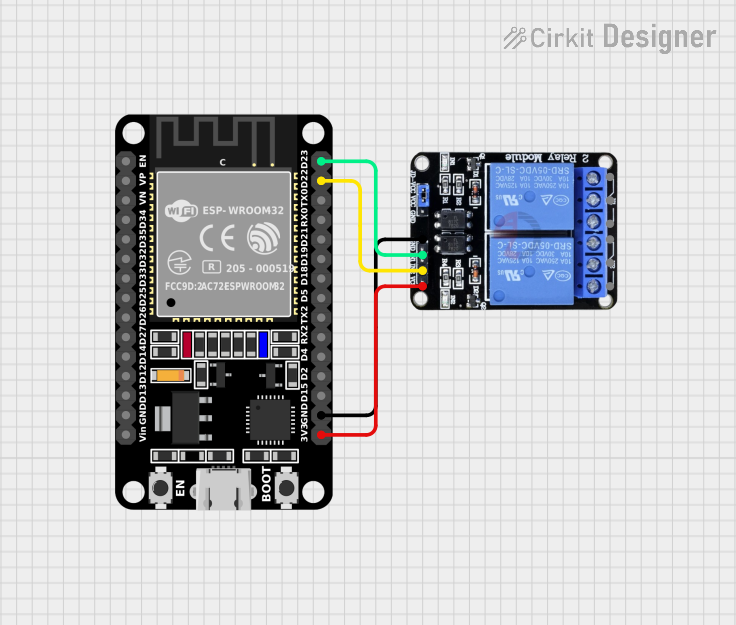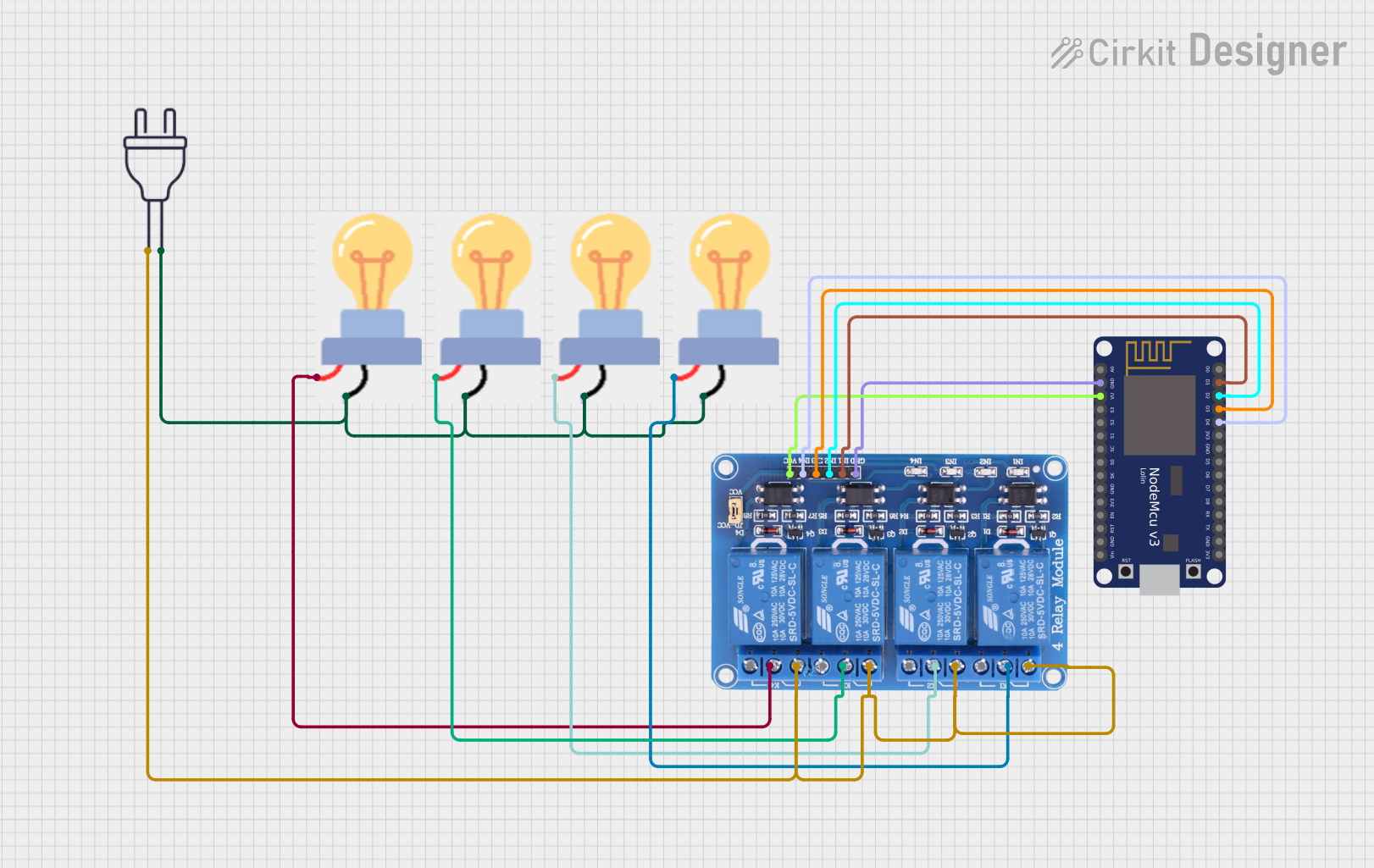
How to Use 3 Channel Relay 5V: Examples, Pinouts, and Specs

 Design with 3 Channel Relay 5V in Cirkit Designer
Design with 3 Channel Relay 5V in Cirkit DesignerIntroduction
The Yongli 5V Relay 3 C is a 3-channel relay module designed for interfacing high-voltage devices with low-voltage microcontroller systems like Arduino, Raspberry Pi, or PIC. Each channel can control a separate device, making it suitable for a variety of applications such as home automation, industrial controls, and hobbyist projects.
Explore Projects Built with 3 Channel Relay 5V

 Open Project in Cirkit Designer
Open Project in Cirkit Designer
 Open Project in Cirkit Designer
Open Project in Cirkit Designer
 Open Project in Cirkit Designer
Open Project in Cirkit Designer
 Open Project in Cirkit Designer
Open Project in Cirkit DesignerExplore Projects Built with 3 Channel Relay 5V

 Open Project in Cirkit Designer
Open Project in Cirkit Designer
 Open Project in Cirkit Designer
Open Project in Cirkit Designer
 Open Project in Cirkit Designer
Open Project in Cirkit Designer
 Open Project in Cirkit Designer
Open Project in Cirkit DesignerCommon Applications and Use Cases
- Home automation systems
- Remote control of AC/DC motors
- Switching of high-power LEDs
- Control of pumps, fans, and other electrical appliances
Technical Specifications
Key Technical Details
- Operating Voltage: 5V DC
- Relay Maximum Switching Voltage: 250V AC / 30V DC
- Relay Maximum Switching Current: 10A (AC) / 10A (DC)
- Number of Channels: 3
- Control Signal: TTL Logic
- Isolation: Opto-isolated inputs
Pin Configuration and Descriptions
| Pin Number | Description | Type |
|---|---|---|
| 1 | IN1 (Input Signal 1) | Digital |
| 2 | IN2 (Input Signal 2) | Digital |
| 3 | IN3 (Input Signal 3) | Digital |
| 4 | GND (Ground) | Power |
| 5 | VCC (5V Input) | Power |
| 6-8 | COM (Common) | Power |
| 9-11 | NO (Normally Open) | Switch |
| 12-14 | NC (Normally Closed) | Switch |
Usage Instructions
How to Use the Component in a Circuit
- Connect the VCC pin to a 5V power supply.
- Connect the GND pin to the ground of the power supply.
- Connect the IN1, IN2, and IN3 pins to the digital output pins of a microcontroller.
- Connect the device you want to control to the NO or NC and COM pins of the relay.
Important Considerations and Best Practices
- Ensure the power supply does not exceed 5V as it may damage the relay module.
- Do not exceed the maximum switching voltage and current ratings of the relays.
- Use flyback diodes when controlling inductive loads to prevent back EMF damage.
- Always ensure proper isolation when working with high-voltage circuits.
Example Code for Arduino UNO
// Define relay control pins
const int relay1 = 2;
const int relay2 = 3;
const int relay3 = 4;
void setup() {
// Set relay pins as outputs
pinMode(relay1, OUTPUT);
pinMode(relay2, OUTPUT);
pinMode(relay3, OUTPUT);
}
void loop() {
// Turn on relay 1
digitalWrite(relay1, HIGH);
delay(1000); // Wait for 1 second
// Turn off relay 1
digitalWrite(relay1, LOW);
delay(1000); // Wait for 1 second
// Repeat for relay 2 and 3
digitalWrite(relay2, HIGH);
delay(1000);
digitalWrite(relay2, LOW);
delay(1000);
digitalWrite(relay3, HIGH);
delay(1000);
digitalWrite(relay3, LOW);
delay(1000);
}
Troubleshooting and FAQs
Common Issues
- Relay not activating: Check the input signal and power connections.
- Intermittent operation: Ensure solid connections and no loose wires.
- Overheating: Do not exceed the rated current and voltage.
Solutions and Tips for Troubleshooting
- Verify that the 5V power supply is stable and within tolerance.
- Check for proper grounding in your circuit.
- Use a multimeter to confirm the control signal from the microcontroller.
- Ensure that the load does not exceed the relay's maximum ratings.
FAQs
Q: Can I control the relay module with a 3.3V microcontroller?
A: Yes, but ensure that the 3.3V signal is sufficient to trigger the relay. Check the module's datasheet for the minimum input signal voltage.
Q: Is it safe to control AC devices with this relay module?
A: Yes, as long as you do not exceed the maximum voltage and current ratings and ensure proper isolation and safety precautions.
Q: Can I use PWM to control the relay?
A: No, relays require a stable HIGH or LOW signal to switch states. PWM is not suitable for relay control.
Remember to always follow safety guidelines when working with electronics, especially when controlling high-voltage devices.